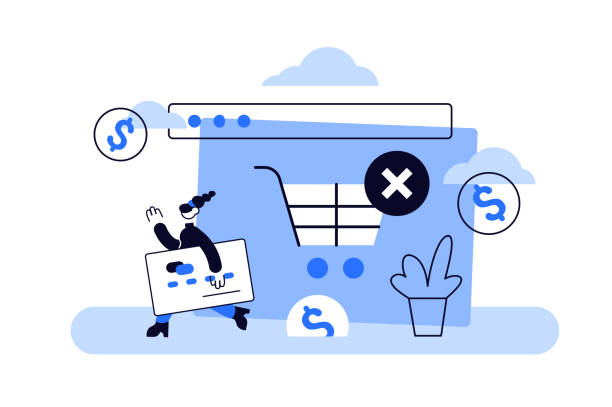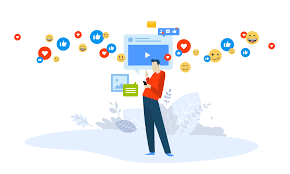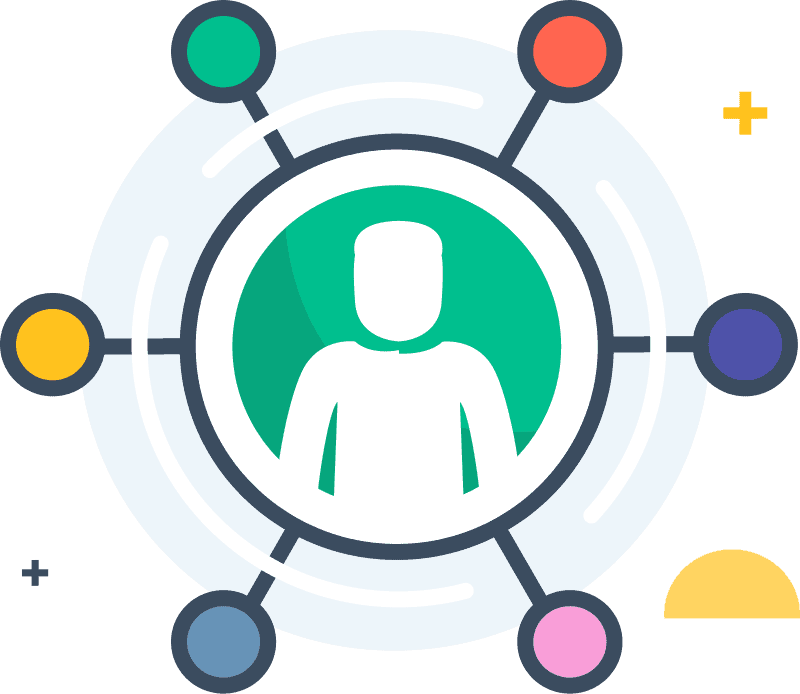Are you looking to gain more sales conversions from your targeted digital ads? With Facebook remarketing, you can use targeted advertising campaigns that reach out to customers who have already visited your website or platform.
This powerful marketing tool is a great way to segment and personalize your audience outreach.
The best part? You can track their engagement with the ads and tailor them toward audiences who are most likely to convert – giving you an extra edge in the competitive world of digital marketing.
In this blog post, we’ll discuss how using Facebook remarketing as part of your overall digital strategy can help drive sales for your business!
1. Reduce Cart Abandonment.
Shopping cart abandonment is one of the biggest challenges online retailers face – and it’s estimated that over 70% of customers abandon their online shopping carts. This can have a significant impact on sales, so taking steps to reduce cart abandonment is essential for any business looking to increase its revenue.

Fortunately, recent advances in targeted advertising technology have made it easier than ever to reduce cart abandonment and increase sales with Facebook remarketing.
What Is Facebook Remarketing?
Facebook remarketing is a type of targeted advertising that allows businesses to reach potential customers who have already interacted with their website or products in some way.
Using advanced tracking technology, businesses can target ads at users who have visited their website, viewed certain products, added items to their carts but not completed purchases, or even searched for specific items on search engines. By targeting customers who are already interested in their products, businesses can create highly effective ad campaigns that convert more leads into paying customers.
How Can Facebook Remarketing Reduce Cart Abandonment?
There are several strategies businesses can use when implementing Facebook remarketing campaigns designed to reduce cart abandonment and boost sales.
First, they should take advantage of dynamic retargeting ads, which allow them to target users based on the specific items they have placed in their shopping carts.
This lets the business tailor an ad campaign specifically to those users’ interests, increasing the chances that they will follow up on their purchase. Additionally, retargeting ads also enable businesses to segment their audience according to factors such as demographics and behavior patterns – enabling them to target ads at a very specific segment of shoppers.
This helps ensure that the ad is relevant and interesting enough for the user to check out further and possibly make a purchase.
Another strategy businesses should consider when using Facebook remarketing is setting up abandoned-cart reminder emails. These are automated messages sent directly from the business reminding shoppers about items left in their cart – encouraging them to complete their purchase before giving up entirely.
Although this may seem like an annoying tactic, research has found that these reminders are actually highly effective at reducing cart abandonment rates and increasing conversion rates overall.
Finally, businesses should also use lookalike audiences when creating new campaigns – these are groups of people similar in demographic makeup or behavior patterns as existing customers – allowing them to reach even more potential buyers with personalized messaging tailored specifically for those audiences’ needs and wants.
The Benefits Of Facebook Remarketing For Reducing Cart Abandonment And Increasing Sales
By leveraging powerful targeting tools such as dynamic retargeting ads and lookalike audiences paired with automated reminder emails, businesses using Facebook remarketing can increase both sales volume and customer loyalty by reducing cart abandonment rates significantly.

Furthermore, by utilizing user data collected through these strategies such as demographic info or behavior patterns related to purchasing habits – companies are able to learn more about what makes their customers tick; helping them tailor future product offerings more accurately towards those markets’ needs and wants – resulting in even higher levels of customer satisfaction overall and further increases in revenue down the line!
2. Keep Your Product Fresh.
Facebook remarketing is a powerful tool for businesses aiming to increase sales by targeting their advertisements at customers who have previously interacted with their brand. It works by tracking the activity of a user on a company’s website and then showing them targeted ads based on that data.
This allows brands to keep their product or service fresh in the minds of potential customers. With the right strategies, businesses can use Facebook remarketing campaigns to create long-term relationships with customers, boost sales and maximize ROI.
To get started with a successful Facebook remarketing campaign, it’s important to understand some basic principles of targeting.
First, you should segment your audience into groups so that your ads can be better tailored to each group’s specific interests and needs. Segmentation helps maximize the effectiveness of your campaign because it allows you to target each group with different messages and offers that are relevant to them.
Second, use data collected from your website visitors and current customers to inform your ad targeting decisions. You can access this data through Facebook Pixel, which aggregates information such as page views, clicks, conversions, and more so that you can further refine your targeted audiences.

The more detailed this data is, the more accurate your targeting will be — allowing you to serve highly relevant ads according to each user’s individual behavior and interests.
It’s also important to stay up-to-date with any changes in customer preferences so you can keep your product or service fresh in their minds. To do this, regularly monitor customer feedback through surveys or comments on social media posts — these are great sources of insight into what resonates most with them and how you can update your offering accordingly.
Additionally, analyze website analytics data such as bounce rates or exit pages to gain a better understanding of which areas need improvement.
Finally, leverage A/B testing tools such as Optimizely or Google Analytics Experiments so you can quickly identify which ads are performing best for individual segments of users and adjust the content accordingly — like changing copy or visuals — so it remains engaging for them over time.
This way, you will be able to continually optimize your Facebook remarketing campaigns for maximum success without having to start from scratch every time.
Overall, when used correctly and kept up-to-date, Facebook remarketing is an invaluable asset for businesses looking to build lasting relationships with customers while boosting sales at the same time.
By leveraging segmentation strategies informed by customer data collected via Facebook Pixel, monitoring customer feedback on social networks, and utilizing A/B testing tools such as Optimizely or Google Analytics Experiments; businesses will be able to create powerful remarketing campaigns that keep their products fresh in the minds of potential customers while creating long-term relationships that foster loyalty overall resulting in increased sales over time
3. Offer Special Incentives To Motivate Customers To Buy.
Offering special incentives to motivate customers to buy is a great way to increase sales. It can be helpful for businesses looking to boost their profits and increase customer loyalty.
Incentives are a way of providing extra value to customers in exchange for their business, and they can be tailored to fit the needs of any type of company.
First, it’s important to understand why incentives matter. Customers often make decisions based on what they stand to gain from a purchase. Offering special discounts, bonuses or other rewards can encourage them to take action and make the purchase that you want them to make. Incentives can also create a sense of urgency; customers may feel more compelled to act quickly if there’s an offer with limited availability or duration.
In addition, offering incentives help build relationships with current customers, encouraging them to stay loyal and continue making purchases with your company over time.
For example, companies could offer loyalty points in exchange for purchases which can then be redeemed for discounts or free items later on. This helps reinforce the connection between the customer and your brand while also providing added value that encourages them to continue shopping with you in the future.
To determine what kind of incentive will work best for your business, it’s important to consider who your target audience is and what will most effectively motivate them.
For instance, if you’re targeting younger consumers you might want to focus on bonus content such as additional music downloads or streaming services; whereas if you’re targeting older consumers you might prefer offering discounts or free shipping instead.
You should also consider how frequently you plan on running promotional campaigns; if you’re only running short-term campaigns then more aggressive incentives such as large discounts may be necessary; however, if you plan on running longer-term campaigns then smaller rewards may be appropriate instead—such as offering free samples or product upgrades with purchases—which can help ensure sustained engagement over time without discouraging continued spending after their initial purchase.
Finally, once you have identified what type of incentive will work best for your business it’s important to consider how this incentive will tie into your overall marketing strategy and advertising efforts—particularly when using Facebook remarketing campaigns specifically designed with targeted ads in mind.
Make sure that these promotions are highlighted within both organic posts as well as paid ads so that potential customers are aware of them when browsing through Facebook pages related to your company so they’re more likely to take action and make the purchase you want them too!
In conclusion, offering special incentives is an effective way to motivate customers and increase sales through targeted advertising campaigns utilizing platforms like Facebook remarketing.
By understanding who your target audience is and tailoring the incentive accordingly, companies can create promotional offers that incentivize people into taking action now rather than later — ultimately leading towards increased profits and customer loyalty down the line!
Targeting A Custom Audience
1. Current Customers
Current customers are an incredibly valuable demographic for marketers, and Facebook provides an array of tools to target them in order to help businesses expand their reach and increase customer loyalty.
With Facebook’s custom audience feature, businesses can create ads specifically tailored to their current customers.
Targeting your current customers with Facebook’s custom audience is a smart move for any business looking to stay top-of-mind with existing clients and increase customer loyalty.
By doing so, you are able to reach those who have already interacted with your business, whether they’ve visited your website, purchased a product or subscribed to your newsletter.
Targeting these potential customers allows you to provide a more personalized experience that further cements the relationship between customer and brand.
Creating a custom audience on Facebook starts by selecting “Audiences” from the Ads Manager dashboard.
From there, select the “Create Audience” tab and choose “Custom Audience.”
You then want to decide which type of customer data you would like to use as the basis for your custom audience such as email addresses, phone numbers or address information.
Once you upload this data to Facebook it will allow you to target those select individuals with specific ads or messages.
Additionally, you can use advanced targeting options—like demographics—to further refine your audiences and ensure that your message is reaching the right people.
There are numerous benefits of utilizing Facebook’s custom audience feature when it comes to targeting current customers. By targeting them with tailored ads, you allow yourself the opportunity to start conversations with existing customers about products or services that may be of interest to them.

Additionally, this tool helps build customer loyalty when used correctly as it shows that your brand takes its relationships with existing customers seriously and is invested in continuing them for years to come.
Facebook also enables users to take full advantage of its retargeting capabilities through its custom audiences feature; meaning any customer who has previously interacted with your business can be targeted directly within their newsfeed in order keep them engaged over time through content relevant specifically to them.
This feature helps ensure that current customers have access not only to promotions but also useful industry-specific information or even educational pieces about industry trends that may be of benefit or interest them over time
Overall, leveraging current customers via Facebook’s Custom Audience feature is an incredibly powerful way for businesses of any size or industry segmentation grow engagement and drive conversions while simultaneously maintaining relationships with existing clients.
Whether it’s providing personalized messaging around promotions or delivering content relevant specifically to those individuals’ interests – doing so demonstrates value while reinforcing the bond between consumer and brand over time – helping foster continued growth now and into the future!
2. Website Traffic And Behavior
Facebook is one of the most popular social media platforms for connecting people and businesses. It provides a great opportunity to build relationships with potential customers and build a digital presence.
One way to do this is by targeting a custom audience in Facebook, which allows you to reach people who are likely to be interested in your product or service.
When it comes to leveraging custom audiences for website traffic and behavior, there are several key steps that need to be taken. The first step is identifying the target audience. This involves researching factors like age, gender, location, interests, activities, and more. Once the target audience has been identified, marketers can start crafting their message and optimizing it for that audience.
Once the target audience has been identified, marketers can then leverage Facebook’s powerful advertising platform to get their message out. On this platform, they can create ads tailored specifically to their desired demographic using various targeting strategies such as age ranges, genders, geographic locations, interests/hobbies, and more.
Advertisers should also consider customizing landing pages or websites so visitors are directed directly to content tailored specifically for them.
Doing this will help them better understand their target market’s needs and wants and convert them into customers more effectively.
Another factor that should not be overlooked when leveraging custom audiences for website traffic and behavior is testing different variations of ads before launching large campaigns.
A/B testing allows marketers to determine which ad elements work best with specific audiences so they can optimize future campaigns accordingly. This helps ensure maximum ROI from campaigns by cutting down on wasted ad spend on ineffective tactics.
Finally, once campaigns have been launched it’s important for advertisers to continually monitor how their ads are performing so they can make adjustments as needed or identify any opportunities for optimization in order to improve results over time.
This includes tracking metrics like clicks per impression (CPI), cost per click (CPC) and cost per conversion (CPA). Analyzing these data points will provide valuable insights into what works well with each audience segment so marketers can tailor future campaigns even more effectively in order to increase conversions further still.
By taking the time to understand their target demographic and using various targeting strategies within Facebook’s platform combined with proper testing of ads before launching larger scale campaigns along with continual monitoring of performance metrics; businesses are able to maximize their return on investment when utilizing custom audiences for website traffic behavior allowing them better engage their desired customer base more effectively than ever before!
3. App Activity
App Activity is a powerful and effective way to target a custom audience on Facebook. It allows advertisers to identify users on the platform who have taken certain actions within their mobile devices or web apps.
By leveraging App Activity targeting, marketers can reach their desired customers with greater accuracy and efficiency than ever before.
App Activity works by tracking user activity in an app, such as playing a game, making a purchase, or completing a registration form. Once this data has been gathered and analyzed, Facebook will create an audience segment made up of people who have taken those same actions previously. This allows advertisers to pinpoint their target market and tailor their messages to them more accurately.
Advertisers can use App Activity data to create tailored ads that are more likely to be effective for each customer segment they create. For example, if someone plays a game regularly on their phone, the advertiser can create an ad for another game featuring the same genre or similar gameplay that this person may find interesting.
This means that the ad is much more likely to resonate with its intended audience than one that was not tailored using App Activity data.
Another advantage of using App Activity targeting is its ability to track customers throughout the entire customer journey from initial contact all the way through conversion. This type of targeting allows advertisers to make sure that they are targeting people based on how far along they are in their customer journey and what stage of the buyer’s cycle they are currently in. It enables them to customize the message even further according to where each individual user is at in the process so it’s always relevant and timely for them.
Finally, App Activity also helps marketers improve their ROI by allowing them to track conversions more accurately and efficiently than other methods.
Advertisers can see exactly which users responded positively or negatively to each version of the ad so they can tweak it accordingly for future campaigns in order to maximize results and reduce wasted spend.
Overall, App Activity targeting is an invaluable tool for marketers looking for ways to target custom audiences on Facebook more effectively and efficiently.
It provides detailed insights into user behavior within apps so advertisers can craft highly targeted ads that are bound to get attention from their intended audiences – resulting in higher ROI overall!
Tips To Get The Most Out Of Your Facebook Remarketing Campaigns
1. Make Sure Your Ads Are Relevant To The Audience
When it comes to running successful Facebook remarketing campaigns, relevance is key. If you want your ads to be effective, they must be tailored to the interests and needs of your target audience. That way, your potential customers are more likely to click on and take notice of them.
So how do you ensure that your ads are relevant? To begin with, you need to create precise audience segments. Start by breaking down your target market into different categories.

Consider factors like age, gender, location, income level, interests, and behaviors. You can also use demographics like marital status or job title if relevant.
Once you’ve developed these segments, create customized messages for each one. Take advantage of the various targeting options available on Facebook such as location-based targeting or interest targeting. This will allow you to deliver specific messages tailored to each segment’s specific needs and interests.
You should also track the performance of each ad in order to refine and optimize them over time. Keep an eye on metrics like click-through rate (CTR) and cost per click (CPC). You can then adjust things like ad copy or images in order to make them more appealing and relevant for your target audience.
Finally, don’t forget about A/B testing! Split tests can help you compare two versions of the same ad in order to see which one performs better with certain audiences.
For example, try changing up the headline or call-to-action on some versions of the ad so that you can see which one generates higher engagement rates from certain segments of users.
By taking these steps before launching a remarketing campaign, you’ll ensure that your ads are both effective and relevant for each segment of your target audience. This will help maximize the impact of your campaigns while also helping you get a better return on investment (ROI). Don’t underestimate the importance of making sure that your ads are highly targeted – it could mean the difference between success and failure!
2. Target Those Who Are Most Likely To Buy
Facebook remarketing campaigns can be incredibly effective in driving conversions and sales for businesses. The key to utilizing these campaigns to their fullest potential is targeting those who are most likely to buy. Through the use of custom audiences, detailed targeting options, and new features like dynamic ads, businesses can identify and reach the people who are more likely to take action after seeing an ad.

Custom Audiences are a powerful tool in Facebook remarketing as they allow advertisers to target users based on their unique characteristics and behaviors. By segmenting users who have already interacted with the brand’s page or website, companies can tailor their ads directly to those who have already shown an interest in their product.
This helps ensure that performance marketers are reaching individuals who not only match the demographics of their ideal customer but also have already demonstrated some level of engagement with their brand.
The next step in targeting those who are most likely to buy is determining which kind of audience you want to target. Once you’ve identified your core demographic (age range, gender, interests…etc.) you can further refine your targets using a combination of detailed targeting options such as connections, content preferences, purchase behavior, location, and more.
For example, if you know your ideal customer is a female aged 35-44 living near a particular city or region you can narrow down your search criteria accordingly.
Additionally, Facebook offers several advanced targeting options such as “lookalike audiences” which allow marketers to find more users with similar traits as those already engaging with their business’s page or website.
Finally, dynamic ads provide another way to target those who are most likely to buy by leveraging past purchases or interactions with a company’s website.
Dynamic ads bridge the gap between online browsing and actual purchasing by automatically displaying relevant product recommendations based on specific items that customers viewed while visiting an e-commerce store or other types of websites.
For instance, if someone was looking at shoes on an apparel website they would then see an ad for that same shoe when they visited Facebook later on – making it easy for them to quickly make the purchase without having to search around again for what they were interested in before.
All in all, it’s important for performance marketers to understand that successful Facebook remarketing requires careful consideration when selecting which audiences will receive ads – especially when trying to reach those who are most likely to buy from them! With the right combination of custom audiences, detailed targeting options and dynamic ads – one can easily identify users whose interests align closely with those of your brand and increase conversion rates through targeted experiences across different platforms.
3. Use Facebook’s Lookalike Audiences
Facebook’s Lookalike Audiences are an incredibly useful tool for digital marketers, offering a way to expand the reach and increase sales by targeting similar audiences. It allows you to find new customers who are like your existing ones, based on their likes, interests, behaviours and more.
By uploading a list of current customers, or creating an audience from those who’ve engaged with your content in the past, Lookalike Audiences can quickly identify other people who have similar characteristics and may be interested in what you offer. This helps you to create more effective ad campaigns that reach the right people at the right time.
Using Lookalike Audiences is one of the best ways to make sure that you get maximum results from your Facebook remarketing campaigns. There are several benefits associated with using this feature including:
1) Higher Conversion Rates: When you use Lookalike Audiences, you can expect higher conversions from your ads because these audiences are already familiar with your brand. They may have seen ads previously or visited your website and now they’re more likely to click on ads and convert into paying customers. This means that even if your online presence isn’t very extensive yet, you can still target users who are most likely to convert.
2) Increased Reach: With Lookalike Audiences, you can easily expand your reach beyond just users who have already interacted with your brand. You can target new potential customers who share similarities with your past customers and are therefore more likely to engage with content related to yours. This could be a great way of growing your customer base while still keeping costs low as compared to traditional advertising methods like TV or radio commercials.
3) Easier Targeting: Facebook’s Lookalike Audiences simplifies the process of finding new potential customers since it does all the legwork for you – all you need to do is upload a list of current customers and it will automatically generate an audience based on similar characteristics and interests that match those of existing users.
The feature also allows for more detailed segmentation so that you can further refine the audience based on factors such as age range, gender or geography for example.
4) Improved Results: As mentioned before, using Facebook’s Lookalike Audiences improves conversion rates since it finds users who have many similarities with existing ones but may not know about your product just yet – until they see an ad tailored towards them showing up in their newsfeed!
This helps to increase sales while decreasing overall ad spend since these types of campaigns tend to be less expensive than other types due to their greater relevancy among consumers.
Overall, Facebook’s Lookalike Audiences are an incredibly powerful tool for digital marketers looking for ways to get the most out of their remarketing campaigns on Facebook.
It offers many advantages over traditional advertising methods such as increased reach and improved conversion rate which makes it easier and more cost-effective for businesses of any size moving forward!
Conclusion
In conclusion, using Facebook Remarketing as part of your digital marketing strategy is a great way to get in front of potential customers who are likely to be interested in your product or service. With targeted advertising campaigns, you can communicate with an audience you know is interested and increase your sales.
Taking advantage of the vast resources available through Facebook gives businesses the opportunity to reach their desired target audiences quickly and effectively.
However, it is important to remember that a successful campaign requires both time and effort if you want to get the most out of it.
By following best practices for remarketing on Facebook, such as customizing ads for each group of users and segmenting existing audiences into new ones, businesses can maximize their ROI and achieve their goals more efficiently.


